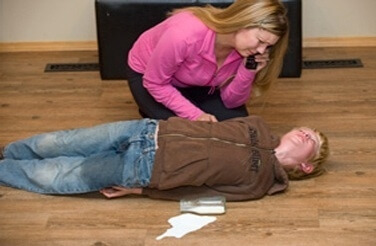
Febrile Convulsion: 6 things to do, Prevention
Oftentimes, because parents aren’t aware of what febrile convulsions are or how to handle them, their response is panicked & not in the best interest of the child.
This post aims to educate parents on the reasons behind convulsions & what to do if your child experiences one.
Table of Content
- What is Febrile Convulsion
- When does Febrile Convulsion Occur
- What to do During a Convulsion
- Prevention of Febrile Convulsion
What is Febrile Convulsion?
A febrile convulsion is a kind of seizure that is caused by a fever. The convulsions are caused by a sudden change in the body temperature in babies and children, usually associated with a fever of more than 38°C.
Not all children who have a fever will also have a convulsion. For most, a fever is simply a sign of infection, usually caused by a virus or bacteria.
You can read about Convulsions here.
When does Febrile Convulsion Occur?
However, 1 in 30 children will experience one during their childhood, with most episodes occurring between 6 months and 6 years of age.
Febrile convulsions usually last two to three minutes but should not last longer than five minutes, and it’s very important for your child’s health that you remain aware of the symptoms they show before and after their convulsion.

What to do During Convulsions
Do not Restrain: Once your child starts convulsing, there’s nothing that you can do during a convulsion to make it stop. However, it’s important that you do not try to restrain your child or stop them moving as you can injure them.
Do not Put anything in the mouth: It’s also very important that you do not put anything into their mouths, including spoons, or even your fingers. Good to also note that you should not rub anything on their skin, including palm kernel or olive oil.
Stay Calm: It is so important to stay calm if your child has a febrile convulsion. Your panic only increases the potential risk to your child, and makes it difficult for you to help them. Despite what you might have seen in movies, restrain from doing any of these. Your child will neither swallow nor bite off his tongue.
Remain calm.
Position them on the side: Put your child on a soft surface, positioning them on their side if possible. A carpeted floor is a good place to put the child, so long as there are no obstacles on which they might injure themselves.
Observe how long: The most helpful thing that you can do while your child has a convulsion is to carefully watch and make a note of what is happening. You will likely need to explain in detail the convulsion to your doctor, so pay attention.
Call for Emergency Help: It is also necessary to time how long the convulsion lasts. If the convulsion lasts more than five minutes, you need to rush the child to the nearest hospital. The video below is a detailed view of what to do during a seizure.
Prevention of Febrile Convulsion
This basically involves every attempt to prevent a fever or any cause of a fever in your child. Common causes of fever include;
- Malaria: use mosquito nets always, as well as antimalarial prophylaxis in suspected cases.
- Give drugs for fever following doctors prescription.
- Don’t wear your child tight clothings: This would enable your child to lose heat properly through the skin.
- Do not use cold water to try to bring down your child’s fever. If you must, use warm water to tepid sponge.
Feel free to ask any questions below and I’d do my best to answer you.
Leave a reply
Leave a reply